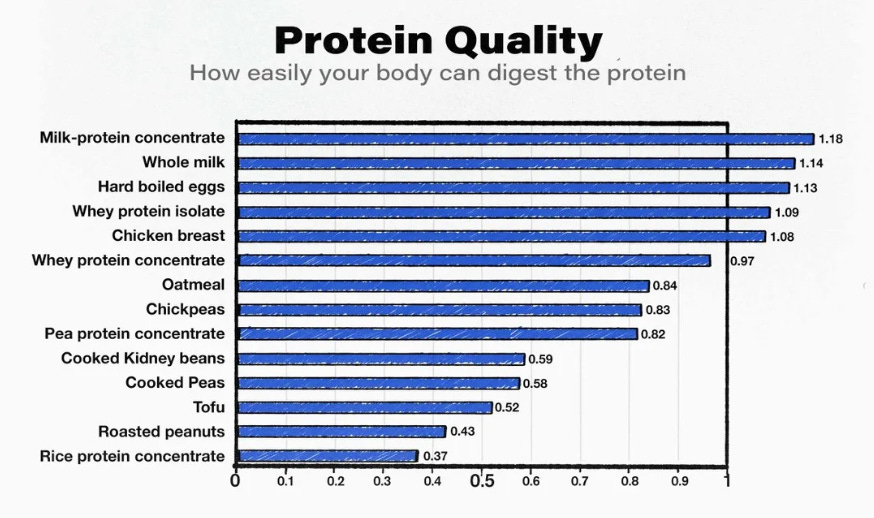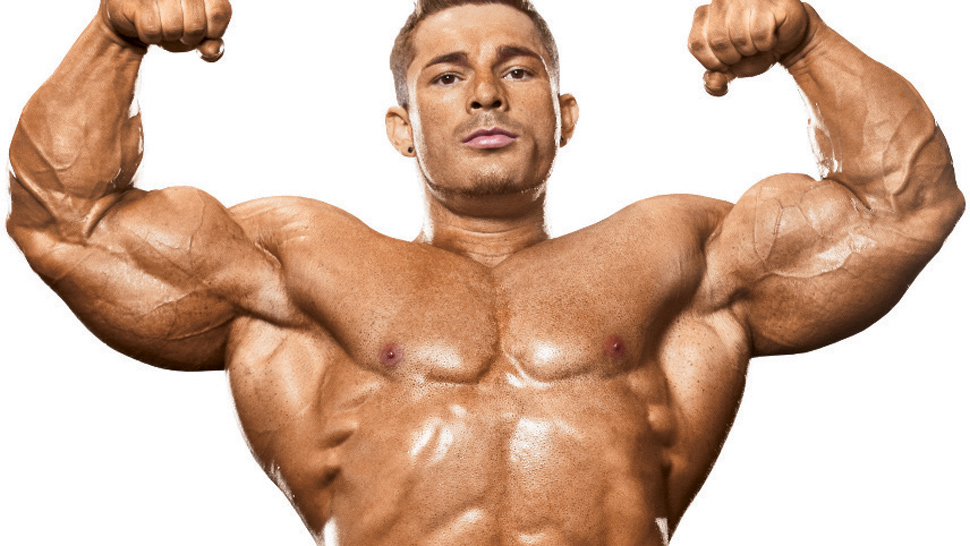· workouts · 12 min read
Does Boxing Build Muscle? The Shocking Truth
If you've ever watched a boxing match, you've probably noticed the impressive physique of the athletes. But does boxing actually build muscle?
If you’ve ever watched a boxing match, you’ve probably noticed the impressive physique of the athletes. But does boxing actually build muscle?
In this article, we’ll explore the science behind muscle building and how it relates to boxing. From the impact of resistance training and high-intensity interval training to the specific muscles targeted during a boxing workout, we’ll cover it all.
And if you’re considering incorporating boxing into your muscle-building routine, we’ve got some tips to help you do it effectively. So, lace up your gloves and let’s dive into the role of boxing in muscle building.
Does Boxing Build Muscle?
Boxing is a form of exercise that can contribute to muscle building and strength training.
Boxing is a full-body workout that combines explosive movements, speed, agility, and strength. This repetitive training involves punching, footwork, and defensive techniques, engaging multiple muscle groups and improving muscle tone and endurance.
The high intensity of boxing also leads to calorie burning and reduction of body fat, resulting in positive changes to body composition. Additionally, the sport requires core stability and coordination, contributing to overall physical fitness and strength development.
The Science Behind Muscle Building
Muscle building is a complex physiological process influenced by exercise, strength training, and body composition.
The process of muscle building involves a series of intricate biochemical reactions within the body. Exercise stimulates the activation and growth of muscle fibers, initiating a cascade of physiological responses. Strength training, including resistance exercises, leads to an increase in muscle fiber size and strength. Body composition plays a crucial role, as the ratio of muscle mass to body fat directly impacts overall muscle development. Understanding the scientific mechanisms behind muscle building is essential for maximizing the effectiveness of training programs.
What Happens to Muscles During Exercise?
During exercise, muscles undergo various physiological changes, responding differently to aerobic and anaerobic activities.
Aerobic exercise, such as jogging or biking, increases oxygen consumption and stimulates the growth of new blood vessels, which enhances endurance and contributes to overall cardiovascular health.
On the other hand, anaerobic activities, like weightlifting or sprinting, lead to the development of muscle strength and power by causing the muscles to rely on stored energy sources such as adenosine triphosphate (ATP) and creatine phosphate. Both forms of exercise play a crucial role in maintaining and improving muscle function and overall physical performance.
What Factors Contribute to Muscle Growth?
Muscle growth is influenced by factors such as resistance training, muscular endurance, and overall physical conditioning.
Developing strength, increasing muscle mass, and improving overall fitness levels require a combination of factors. Resistance training, for example, stimulates muscle growth by creating micro-tears in muscle fibers. These tears then repair and grow larger and stronger.
Additionally, focusing on muscular endurance helps muscles sustain activity over longer periods, contributing to their growth and definition. Physical conditioning, achieved through various forms of exercise and training, is crucial for optimizing overall muscle development and performance.
How Does Boxing Affect Muscle Growth?
Boxing affects muscle growth through various mechanisms such as resistance training, high-intensity interval training, and full-body workouts, while also contributing to increased testosterone production.
Boxing training techniques are designed to challenge and strengthen muscles, resulting in improved strength, endurance, and muscle hypertrophy. This is achieved through dynamic movements and combinations that engage multiple muscle groups simultaneously, promoting overall muscle development.
The high-intensity nature of boxing workouts also stimulates muscle growth by creating microtears in the muscle fibers. These tears then repair and grow stronger during the recovery process, making boxing a highly effective form of exercise for enhancing muscle growth and conditioning the entire body.
Resistance Training
Boxing involves resistance training through the use of body weight, strength, and dynamic movements, contributing to muscle development and overall physical fitness.
The use of body weight in boxing helps build functional strength and power, essential for delivering strong punches and maintaining balance in the ring.
Dynamic movements such as footwork, agility drills, and shadowboxing engage various muscle groups, enhancing coordination, speed, and endurance.
By incorporating resistance training into their workouts, boxers can improve their overall athletic performance and reduce the risk of injury, ultimately leading to a more effective and successful boxing career.
High-Intensity Interval Training
Boxing incorporates high-intensity interval training, promoting cardiovascular health and enhancing anaerobic exercise capacity for improved muscle performance and endurance.
This training method involves alternating periods of intense activity with brief rest or low-intensity recovery periods. It not only strengthens the heart and improves its ability to pump blood efficiently but also enhances the body’s oxygen consumption during and after exercise.
By incorporating HIIT into boxing routines, athletes can elevate their VO2 max, leading to better overall cardiovascular fitness and optimized anaerobic energy production. This approach can contribute to the development of muscle endurance, enabling boxers to sustain high-intensity efforts throughout a match.
Full-Body Workout
Boxing offers a comprehensive full-body workout, engaging multiple muscle groups and enhancing overall physical conditioning, contributing to holistic muscle development.
This form of exercise incorporates various elements such as cardio, strength, and agility training, providing a dynamic and challenging workout for individuals of all fitness levels.
Since boxing involves movements like punching, footwork, and defensive maneuvers, it targets the arms, shoulders, core, and legs, promoting muscular endurance and coordination.
The intensity of boxing workouts promotes cardiovascular health and burns a significant number of calories, making it an effective way to improve overall physical conditioning and achieve a lean, toned physique.
Increased Testosterone Production
Boxing can lead to increased testosterone production, which plays a vital role in promoting muscle mass development and optimizing body composition.
Boxing training can lead to higher levels of testosterone, which can contribute to an increase in muscle fiber size and strength. This hormonal response also helps to reduce body fat percentage and improve overall body composition.
The combination of increased muscular strength and improved body composition from boosted testosterone production in boxing can provide significant benefits for athletes and fitness enthusiasts. This highlights the crucial influence of hormone regulation on muscle development.
What Muscles Does Boxing Target?
Boxing targets various muscle groups, including those in the upper body, core, and lower body, contributing to overall strength and muscular endurance.
The repetitive punching movements engage the muscles in the arms, shoulders, chest, and back, helping to build strength, power, and endurance in these areas. The rotational movements involved in throwing punches work the muscles in the core, contributing to stability and balance.
Footwork and defensive maneuvers in boxing engage the muscles in the legs and glutes, enhancing lower body strength and agility. Boxing provides a full-body workout, enhancing muscular endurance and strength while also improving cardiovascular health.
Upper Body Muscles
Boxing training engages the upper body muscles, enhancing punching strength and muscular endurance, vital for overall performance and physical conditioning.
Boxing workouts have been shown to lead to hypertrophy and increased muscle strength due to the consistent use of muscles. This is especially evident in the chest, shoulders, arms, and core, as these muscles are engaged in the repetitive punching motions. Additionally, the rotational movements involved in throwing punches improve the strength and flexibility of the torso and oblique muscles, ultimately contributing to overall stability and strength.
As a result of these targeted exercises, boxers develop well-defined and functional upper body muscles, which are crucial for their performance in the ring. This not only enhances their physical appearance, but also improves their muscular endurance and power generation, giving them an advantage in the ring.
Core Muscles
Boxing exercises are effective for strengthening core muscles, promoting stability, rotational power, and body control, essential for athletic performance and functional strength.
These exercises engage the entire core, including the abdominals, obliques, lower back, and hips, enhancing stability and balance.
The dynamic punching and movement patterns in boxing require rotational power, contributing to the development of a strong, functional core.
By consistently engaging in boxing workouts, individuals can improve their overall body control, leading to better posture, coordination, and injury prevention in various physical activities.
Lower Body Muscles
Boxing involves movements that engage lower body muscles, enhancing footwork, agility, and power, contributing to overall athletic performance and dynamic strength.
Boxing footwork drills involve quick and precise footwork, which targets the calves, hamstrings, and quadriceps. These movements help develop strong and agile leg muscles through rapid pivoting and lateral movements. The explosive power generated from the legs during punches and defensive maneuvers contributes to increased lower body strength. Continual engagement of lower body muscles improves balance, coordination, and overall athleticism, making boxing an effective workout for lower body muscle development.
Can Boxing Be Used as a Primary Muscle-Building Exercise?
Boxing can serve as a primary muscle-building exercise, offering unique pros and cons as part of a comprehensive fitness routine.
Boxing is a highly effective workout that engages multiple muscle groups, such as the core, shoulders, arms, and legs, to enhance strength and endurance.
The intensity of boxing workouts can greatly improve cardiovascular fitness, making it a valuable addition to any fitness routine.
However, it’s important to incorporate proper warm-ups and stretching routines to prevent injury, as the dynamic movements in boxing can strain muscles and joints.
Integrating boxing into a diverse fitness regimen can provide an exciting and effective way to build muscle and improve overall physical conditioning.
Pros of Using Boxing for Muscle Building
Using boxing for muscle building offers advantages such as improved body composition, enhanced physical conditioning, and effective weight management, contributing to holistic fitness outcomes.
Boxing is an efficient way to burn calories, increase lean muscle mass, and boost metabolism. This aids in reducing body fat and sculpting a leaner physique.
Boxing workouts engage major muscle groups, promoting strength and endurance while also improving cardiovascular health. The high-intensity nature of boxing exercises elevates the heart rate, leading to increased calorie expenditure and supporting weight management goals. This dynamic form of training not only enhances physical strength and agility but also provides a fulfilling and engaging workout experience.
Cons of Using Boxing for Muscle Building
Using boxing for muscle building presents challenges such as potential injury risks, muscle imbalances, and limitations in specific muscle targeting, requiring careful consideration and supplementation.
It’s important to note that while boxing can provide a full-body workout, the repetitive and high-impact nature of the sport can lead to overuse injuries and strains.
Since boxing primarily focuses on upper body movements, it may lead to muscle imbalances between the upper and lower body, potentially causing posture issues and decreased flexibility.
If the goal is to target specific muscle groups for hypertrophy, boxing alone may not provide the precise isolation and resistance needed for optimal muscle building.
Tips for Incorporating Boxing into a Muscle-Building Routine
Incorporating boxing into a muscle-building routine requires attention to proper technique, adequate rest, and proper nutrition for optimal results and performance.
To prevent injury and optimize muscle growth, proper technique is crucial in boxing. This includes focusing on correct punching form and footwork to engage the right muscles effectively.
Rest is also essential for muscle recovery and growth, so make sure to allow enough time between boxing sessions. Additionally, pairing boxing with a well-balanced diet that includes lean proteins, complex carbohydrates, and healthy fats can further support muscle development and overall performance.
Proper Technique and Form
Maintaining proper technique and form in boxing is essential for maximizing efficiency, preventing injuries, and optimizing the muscle-building potential of the workout.
This means that each punch should be executed with precision and control, not only to deliver maximum impact but also to minimize the risk of strain or injury.
By focusing on proper footwork, body positioning, and movements, boxers can enhance the effectiveness of their training while reducing the likelihood of sprains, strains, or more serious injuries.
Utilizing correct technique and form helps to activate and target specific muscle groups more effectively, leading to greater muscle development and overall physical conditioning.
Adequate Rest and Recovery
Ensuring adequate rest and recovery in boxing is crucial for supporting muscle repair, managing fatigue, and optimizing the benefits of the muscle-building routine.
Proper rest is essential for the body to recover from the physical demands of boxing training. This allows muscles to repair and grow stronger. Without adequate recovery, athletes may experience increased fatigue, decreased performance, and a higher risk of injury. By prioritizing rest and recovery, boxers can effectively manage fatigue, improve their overall performance, and reduce the risk of overtraining. This ultimately enhances their athletic capabilities.
Proper Nutrition and Hydration
Maintaining proper nutrition and hydration is essential for sustaining energy levels, supporting muscle recovery, and optimizing the benefits of boxing in a muscle-building routine.
A well-balanced diet rich in lean proteins, complex carbohydrates, and healthy fats provides the necessary nutrients for muscle repair and growth.
Adequate hydration is equally crucial as it regulates body temperature, lubricates joints, and transports nutrients to the muscles. Proper nutrition and hydration also play a vital role in preventing fatigue, enhancing endurance, and boosting overall performance during boxing training and competition.
Frequently Asked Questions
1. Does boxing build muscle?
Yes, boxing is a great form of exercise that can help build muscle. It involves a lot of repetitive movements and resistance, which can help increase muscle mass and strength.
2. How does boxing build muscle?
Boxing involves a combination of strength and resistance training, which helps build muscle. Punching and throwing punches requires the use of arm, shoulder, and core muscles, while footwork and movement engages leg muscles.
3. Can boxing help me achieve a toned physique?
Yes, regular boxing workouts can help you achieve a toned and lean physique. It involves a lot of high-intensity movements and engages multiple muscle groups, which can help burn fat and build muscle simultaneously.
4. Is boxing suitable for all body types?
Yes, boxing can be a great workout for people of all body types. It is a highly customizable form of exercise, and trainers can tailor workouts to suit individual needs and fitness levels.
5. Can women benefit from boxing for muscle building?
Absolutely! Boxing is not just for men. Women can greatly benefit from boxing workouts as it targets multiple muscle groups and can help build strength, coordination, and endurance.
6. How often should I box to see muscle-building results?
To see muscle-building results from boxing, it is recommended to have at least 2-3 sessions per week. This will allow enough time for your muscles to recover and grow while still maintaining a consistent workout routine.






